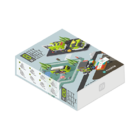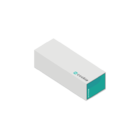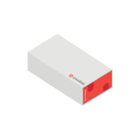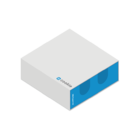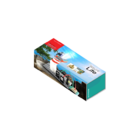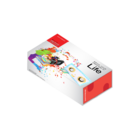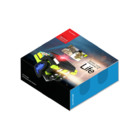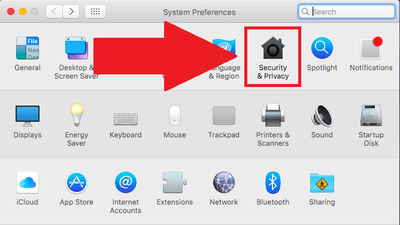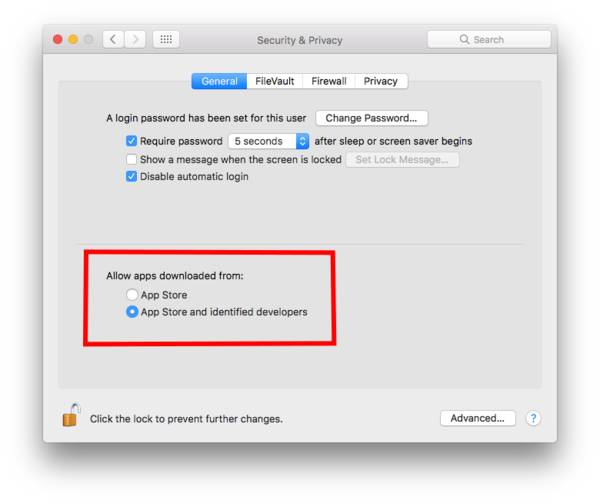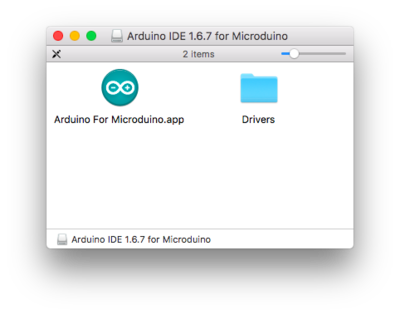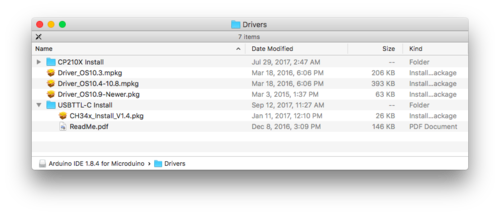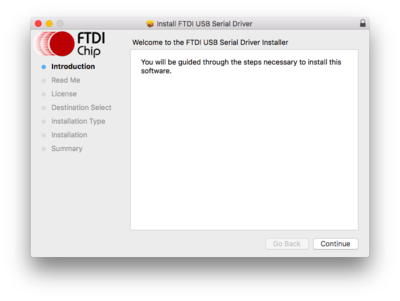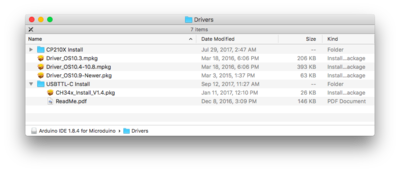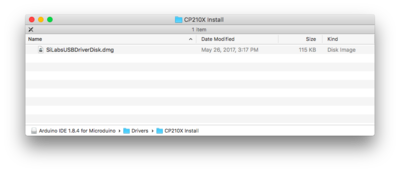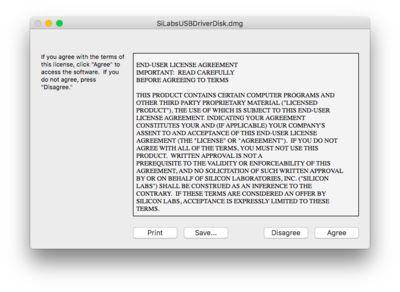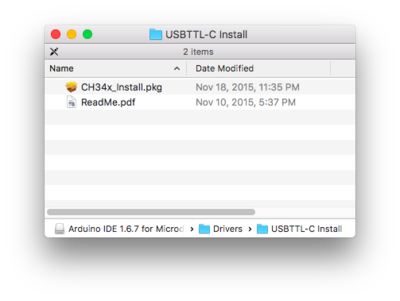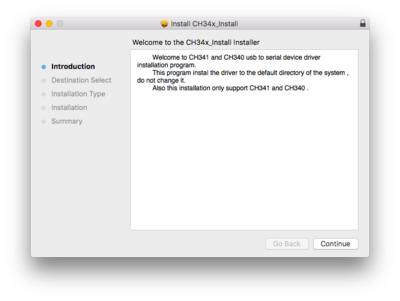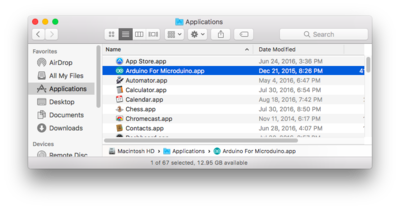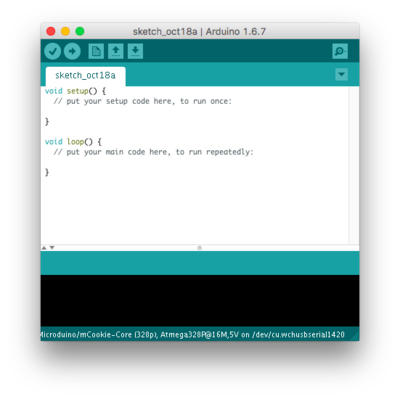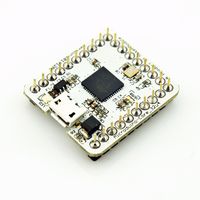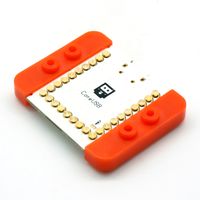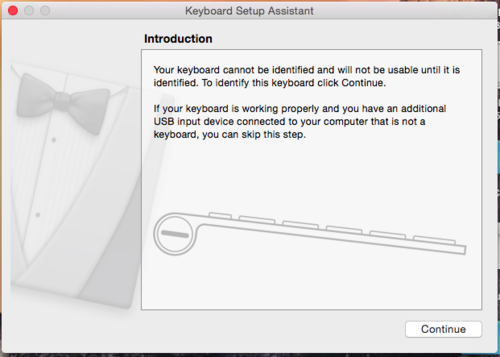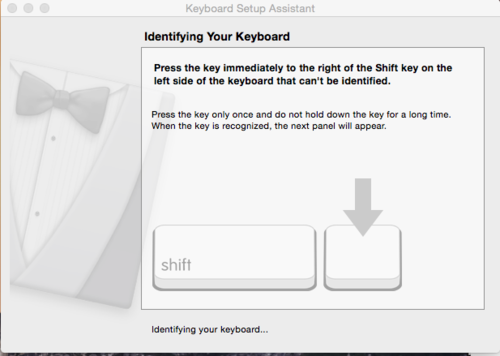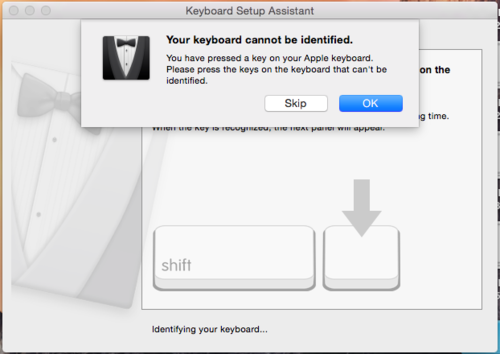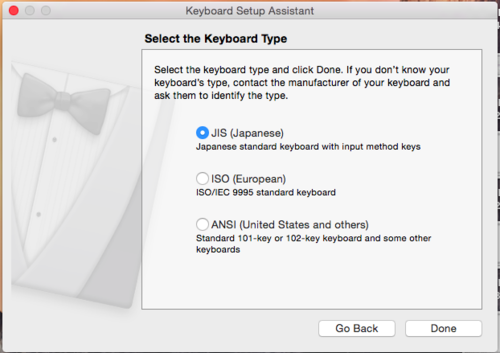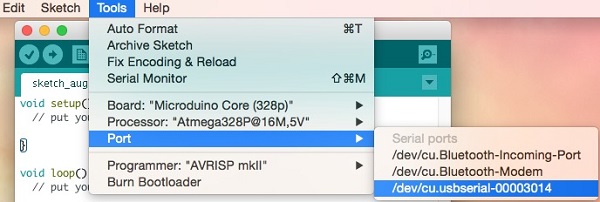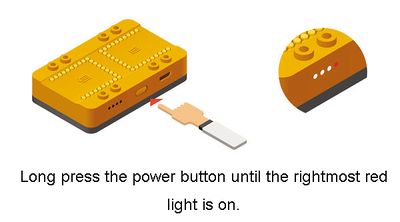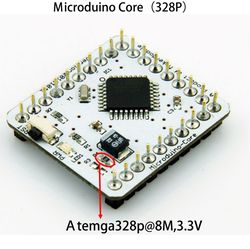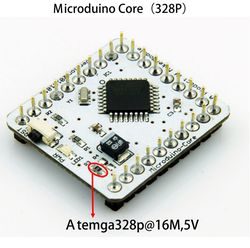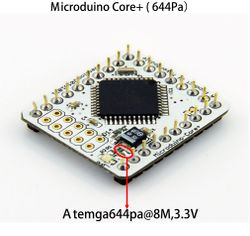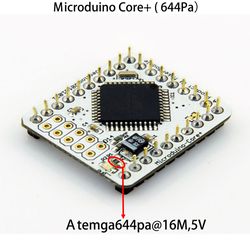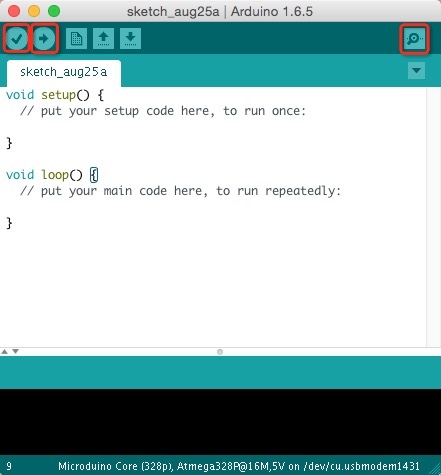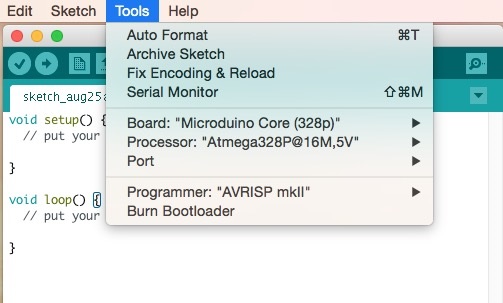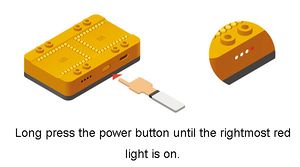Difference between revisions of "Getting started: Microduino IDE for Mac"
(→Installation) |
(→Drivers Installation) |
||
| Line 35: | Line 35: | ||
[[File:MacTutorial_Settings_3.png|600px]] | [[File:MacTutorial_Settings_3.png|600px]] | ||
==Drivers Installation== | ==Drivers Installation== | ||
| + | ===FTDI Driver=== | ||
*Open the downloaded file. A folder will open containing the Microduino IDE and drivers for the hardware. | *Open the downloaded file. A folder will open containing the Microduino IDE and drivers for the hardware. | ||
[[File:MacTutorial_1_OpenDmg.png|400px]] | [[File:MacTutorial_1_OpenDmg.png|400px]] | ||
| Line 45: | Line 46: | ||
*Follow the on-screen instructions to install the driver. | *Follow the on-screen instructions to install the driver. | ||
[[File:MacTutorial_3_InstallDriver1.png|400px]] | [[File:MacTutorial_3_InstallDriver1.png|400px]] | ||
| − | *Once completed return to the | + | ===CP210X Driver=== |
| + | *Once completed return to the '''Drivers''' folder. Open the '''CP210X Install''' folder. This is another driver that needs to be installed. | ||
| + | [[File:MacTutorial_2_DmgContents.png|400px]] | ||
[[File:Mac_Install_SliDriver.png|400px]] | [[File:Mac_Install_SliDriver.png|400px]] | ||
*Open '''SliLabsUSBDriverDisk.dmg'''. Follow the on-screen instructions to install the driver. | *Open '''SliLabsUSBDriverDisk.dmg'''. Follow the on-screen instructions to install the driver. | ||
[[File:Mac_Driver_Install_SliDriver_Prompt.png|400px]] | [[File:Mac_Driver_Install_SliDriver_Prompt.png|400px]] | ||
| − | *Once completed. Open the '''USBTTL-C Install''' folder. This is another driver that needs to be installed. | + | ===CH34x Driver=== |
| + | *Once completed return to the '''Drivers''' folder. Open the '''USBTTL-C Install''' folder. This is another driver that needs to be installed. | ||
*'''<span style="color:#FF0000">Important Note</span>''': '''This driver requires you to restart your computer. Save all work before installing this driver!!!''' | *'''<span style="color:#FF0000">Important Note</span>''': '''This driver requires you to restart your computer. Save all work before installing this driver!!!''' | ||
* ('''Note''': The Mac OS X 10.6 or older package does not contain this. Therefore, you can skip this step.) | * ('''Note''': The Mac OS X 10.6 or older package does not contain this. Therefore, you can skip this step.) | ||
| + | [[File:MacTutorial_2_DmgContents.png|400px]] | ||
[[File:MacTutorial_4_DriverFolder.png|400px]] | [[File:MacTutorial_4_DriverFolder.png|400px]] | ||
*Open '''CH34x_Install.pkg'''. Follow the on-screen instructions to install the driver. | *Open '''CH34x_Install.pkg'''. Follow the on-screen instructions to install the driver. | ||
[[File:MacTutorial_5_InstallDriver2.png|400px]] | [[File:MacTutorial_5_InstallDriver2.png|400px]] | ||
| + | ==Application Copying== | ||
*Drag the '''Arduino for Microduino.app''' application to your '''Applications''' folder to install the IDE. | *Drag the '''Arduino for Microduino.app''' application to your '''Applications''' folder to install the IDE. | ||
<br> | <br> | ||
Revision as of 18:25, 18 September 2018
|
The guide below is a software setup guide for Mac OS aimed for general use of Microduino products. For kit specific getting started guides please follow the appropriate links in the #Kit_Specific_Software_Setup_Guides section: ContentsKit Specific Software Setup GuidesIf your kit is not listed, please proceed following the general setup guide below. DownloadDownload the latest MacOS IDE: HERE InstallationSecurity Settings
Drivers InstallationFTDI Driver
CP210X Driver
CH34x Driver
Application Copying
Microduino / mCookie CoreUSB Setup
Confirm Drivers Installed SuccessfullyConfirm that the drivers are installed successfully based on your hardware. Refer to the table below for which programmer each kit uses:
USBTTL
CoreUSB
mBattery
IMPORTANT: Ensure that mBattery is "ON" by pressing and holding the button. A red LED should be on, which indicates that power is being supplied to the modules.
Selecting Board Type and ProcessorSelecting the Board Type and Processor is required to compile the correct code for the core module. Configuring the software is done under Tools > Board and Tools > Processor. Below is the table which lists all the core modules with corresponding Board and Processor. The table also lists kits that contain specific core modules. Example usage would be for the Core module in Itty Bitty City. Board is Microduino/mCookie-Core (328p) and Processor is Atmega328P@16M,5V.
Determining Processor VariantCoreCore+Arduino IDE BasicsInterface
Tools
Uploading Code
|
